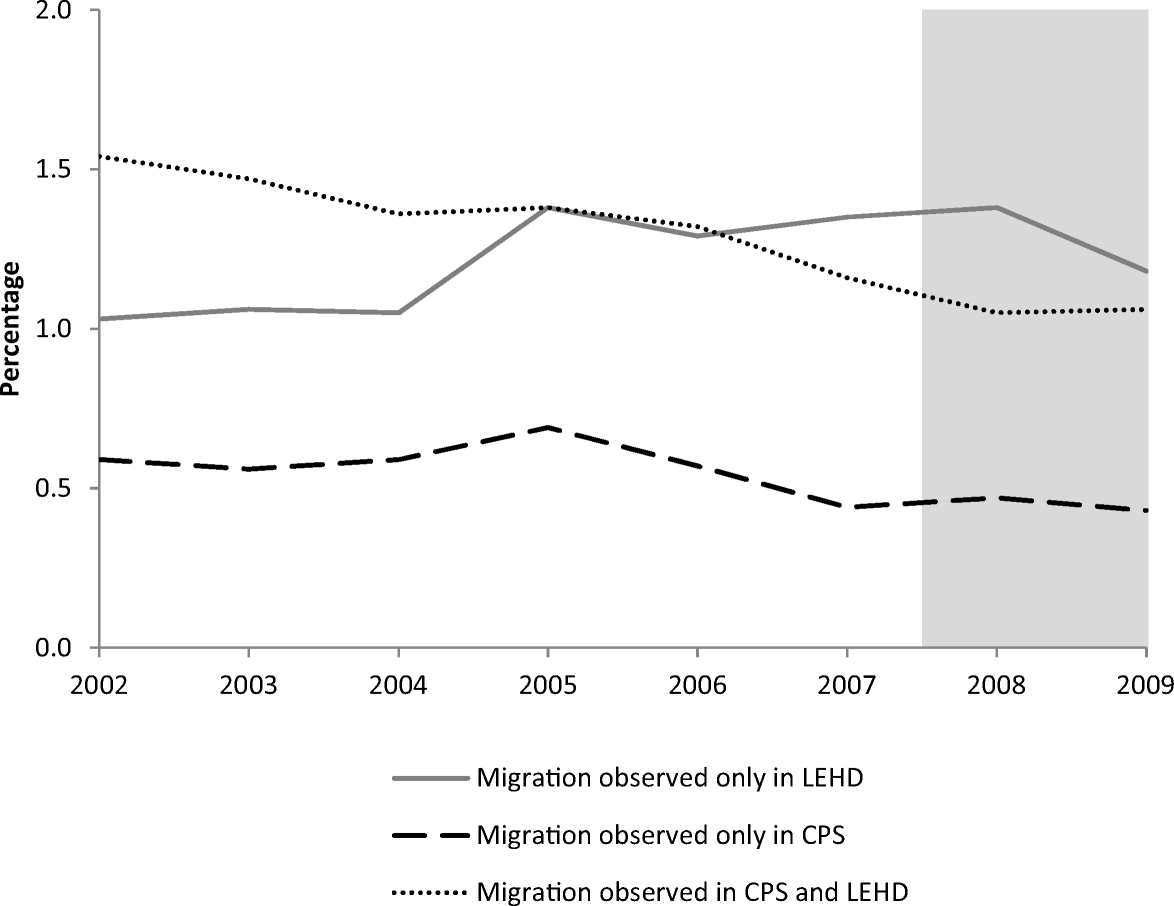Interstate Migration and Employer-to-Employer Transitions in the United States: New Evidence From Administrative Records Data
Author: Henry Hyatt
Author: Erika McEntarfer
Author: Ken Ueda
Author: Alexandria Zhang
Abstract: Declines in migration across labor markets have prompted concerns that the U.S. economy is becoming less dynamic. In this study, we examine the relationship between residential migration and employer-to-employer transitions in the United States, using both survey and administrative records data. We first note strong disagreement between the Current Population Survey (CPS) and other migration statistics on the timing and severity of any decline in U.S. interstate migration. Despite these divergent patterns for overall residential migration, we find consistent evidence of a substantial decline in economic migration between 2000 and 2010. We find that composition and the returns to migration have limited ability to explain recent changes in interstate migration.
Date: 2018-10-08
URL: https://doi.org/10.1007/s13524-018-0720-5
Volume: 55
Pages: 2161-2180
Publication: Demography
Issue: 6
Date Added: 11/8/2021, 3:58:11 PM
Reading Notes:
Objective: To compare the decline in migration in the CPS ASEC data to migration rates in administrative data
Importance: Declining migration is a concern in light of other signs of decreasing labor market flexibility in the U.S.
Background: In the early 1990s 3% of individuals in the CPS reporting oving to a different state in the US in the last year, but by the late 2000s that rate had fallen by half
Data & Key Variables:
CPS ASEC
ACS
IRS SOI Migration Rates
LEHD Composite Person Record
Methodology: Link LEHD to the CPS to see what is happening at an individual respondent level with migration
Results: Some respondents who appear to move in the administrative data do not report cross-state moves in the survey, and the percent of those has been growing over time.
Jobs for job-related reasons in the CPS follow LEHD moves more closely and have not fallen sharply
Key Table/Figure:



